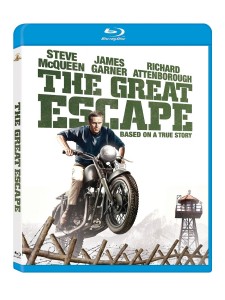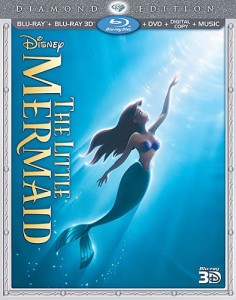Chariots of Fire
Posted on December 13, 2002 at 5:17 am
A+| Lowest Recommended Age: | Kindergarten - 3rd Grade |
| MPAA Rating: | Rated PG for adult situations and language |
| Profanity: | None |
| Alcohol/ Drugs: | Social drinking |
| Violence/ Scariness: | Tense moments of competition |
| Diversity Issues: | A theme of the movie |
| Date Released to Theaters: | 1981 |
| Date Released to DVD: | July 9, 2012 |
| Amazon.com ASIN: | B00284AVN |
In honor of the 2012 Olympics in London, this 1981 classic and winner of the Oscar for Best Picture has been reissued.
This is the true story of two athletes who raced in the 1924 Olympics, one a privileged Jewish student at Cambridge (Ben Cross as Harold Abrahams), the other a missionary from Scotland (Ian Charleson as Eric Liddell). Wonderfully evocative of the time and place, with superb performances, the movie shows us the source of the runners’ determination, for one a need to prove his worth to himself and the society that discriminates against him, for the other, a way of connecting to God.
The movie begins with the memorial service for Harold Abrahams, and then goes back to his first day at Cambridge, just after World War I. A speaker reminds the entering class that they must achieve for themselves and for those who were lost in the war. Abrahams is a bit arrogant, but finds friends and impresses the whole university by being the first to meet a long-term challenge and race all the way around the quad within the twelve strokes of the clock at noon.
Liddell is deeply committed to missionary work. But when his sister asks him to give up running so that he can go with her, he explains that “I believe God made me for a purpose. He also made me fast. And when I run, I feel his pleasure.”
Abrahams is devastated when he loses to Liddell, saying he won’t race unless he can win. But his girlfriend reminds him that he can’t win unless he races. Both Abrahams and Liddell make the Olympic team. There is a crisis when Liddell’s event is scheduled for a Sunday, because he will not run on the Sabbath. But Lord Lindsay (Nigel Havers) graciously allows Liddell his place in a different event, “just for the pleasure of seeing you run,” and both Liddell and Abrahams win.
Both of the athletes must make difficult choices with a great deal of opposition. One uses a coach (who isn’t even English), in defiance of tradition and expectations. The other resists the urging of his sister, the person he loves most, who wants him to quit racing and defies the Prince of Wales, who wants him to race on the Sabbath.
One of the themes of the movie is the problems that the Jewish athlete has dealing with the prejudice of society. The other athlete has to confront the conflict between the dictates of his religion and the requirements of the sport (including the entreaties of the heir to the throne) when he is asked to compete on the Sabbath.
Families who watch this movie should talk about these questions: Why was running so important to these men? Was it different for different athletes? Why does Harold Abrahams think of quitting when he loses to Liddell? Have you ever felt that way? What did you do? Why doesn’t Eric’s sister want him to race? Why does he race despite her objections? Why don’t the teachers at Harold Abraham’s school think it is appropriate to have a coach? Would anyone think that today?
This movie deservedly won the Oscars for best picture, screenplay, costume design, and music.
Families who enjoy this movie will also enjoy a two-part made for television miniseries called “The First Olympics — Athens 1896,” about the American team entering the first modern Olympics in 1896. It features Louis Jourdan (of “Gigi”), David Caruso (of the original cast of television’s “NYPD Blue”) and David Ogden Stiers (of Disney’s “Beauty and the Beast”). While it does not have the resonance and meaning (or the production values) of “Chariots of Fire,” it is heartwarming, funny, exciting, and a lovely period piece. Not currently available on video, it usually shows up on television around the time of Olympic competitions. An extremely silly movie about the first modern Olympics is “It Happened in Athens,” with Jayne Mansfield and real-life Olympic athlete Bob Mathias.
“Miracle on Ice,” another made for television movie, is the true story of the 1980 U.S. hockey team, which astonished the world at the Olympics in Lake Placid. Yet another Olympic made for television movie, “The Golden Moment,” is the story of a romance between a Soviet gymnast and an American athlete. Its primary charm is the fact that it takes place at an Olympics in which, in real life, the U.S. never competed — that was the year the U.S. protested the Soviet invasion of Afganistan by boycotting the Moscow Olympics.
See also “Cool Runnings” about the 1988 Jamaican bobsled team, “The Bob Mathias Story,” with the real-life decathalon champion playing himself, “The Jesse Owens Story,” with Dorian Harewood as the legendary athlete, and “Babe” with Susan Clark as Babe Deidrickson Zaharias.
On the silly side, try “Animalympics,” an animated spoof of the Olympics with some comical moments, and the very funny “Million Dollar Legs,” with W.C. Fields as the President of Klopstockia, a country entering the Olympics.
And of course Bud Greenspan’s documentaries about the Olympics are always worth watching, for the stories and the personalities as much as for the athletic achievements.


